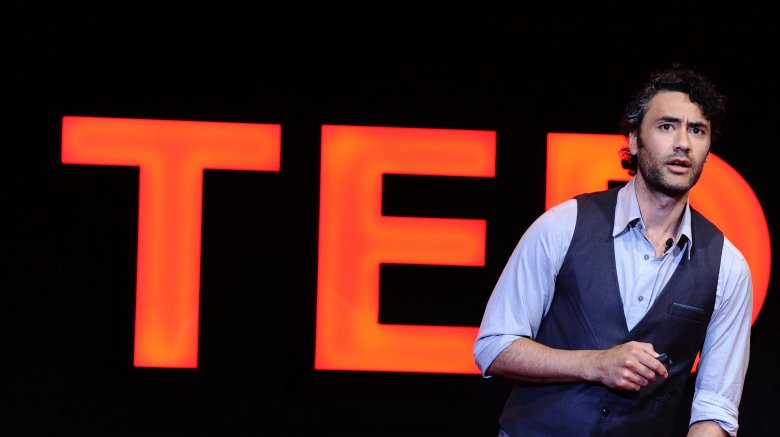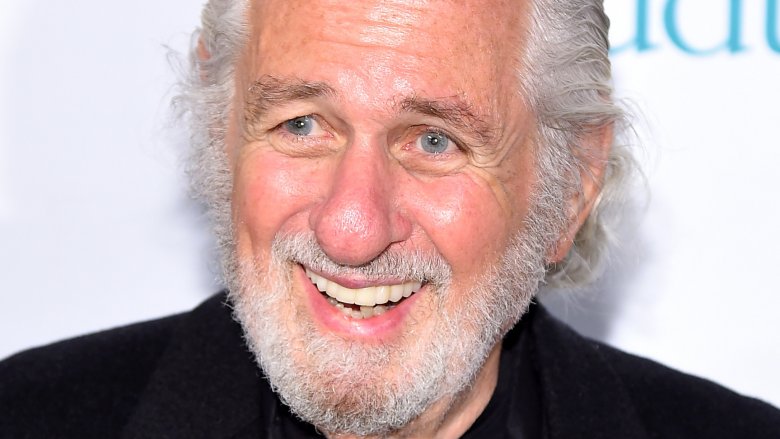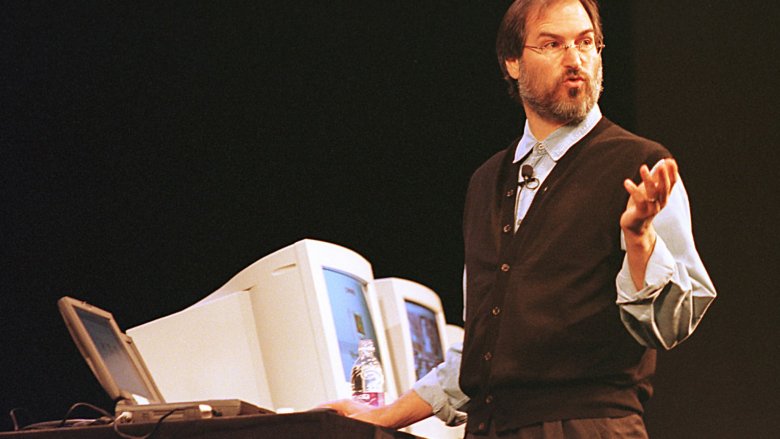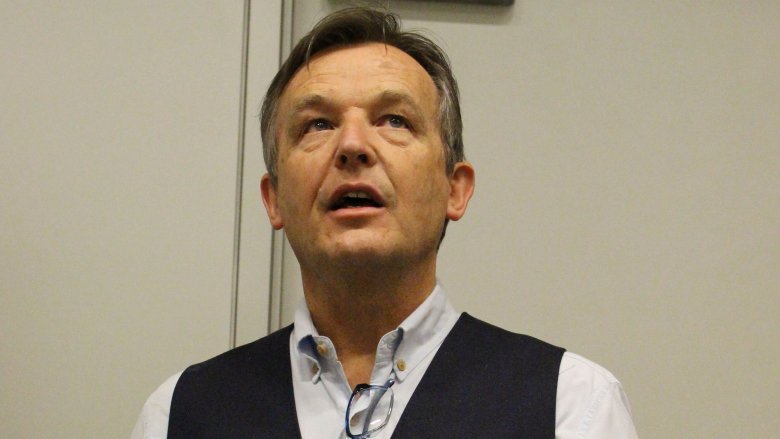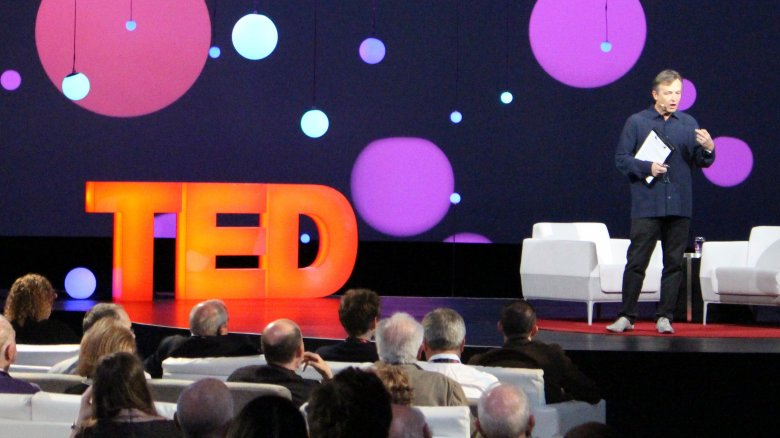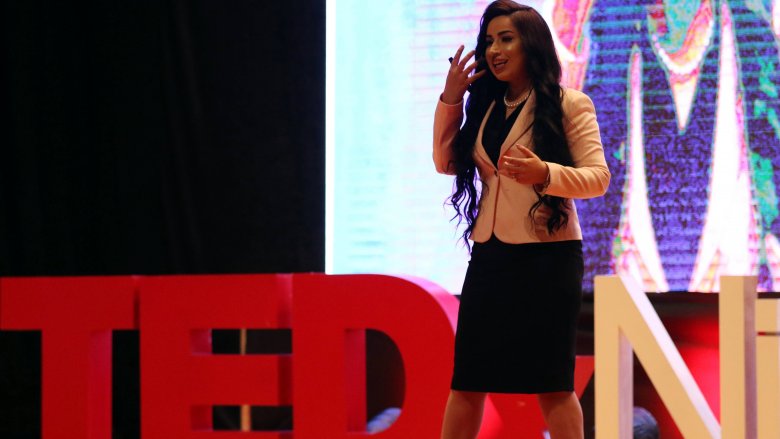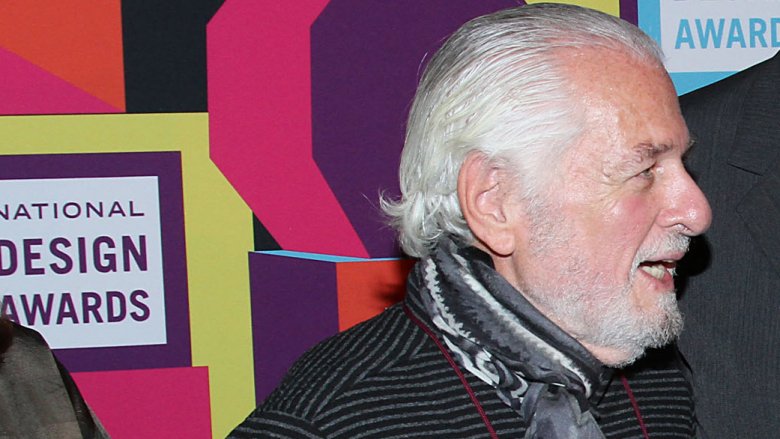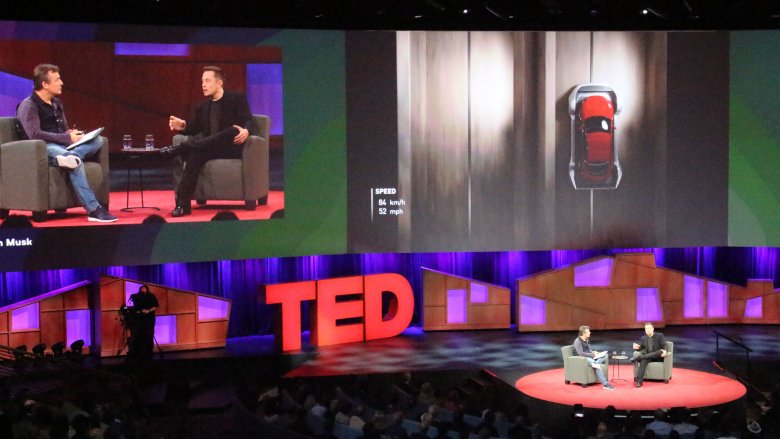The Untold Truth Of TED Talks
If you've ever searched for inspiration, creative fuel, crazy new tech, or a unique way of looking at an old problem, you're probably familiar with TED. No, not Ted Danson, not Teddy Roosevelt, and not your next door neighbor Ted, but rather, those glitzy speeches that have lit up Facebook for the last decade or so, giving you a slight burst of hope among all the nasty political arguments. Whether the topic is art, science, or the effect of memes on pop culture, there's probably a TED Talk on it, and everyone from Malcolm Gladwell to Sarah Silverman has had a turn on the big stage.
TED Talks have become such a massive phenomenon that it's hard to remember what they started out as. The slick and shiny TED Talks you're familiar with today are quite different from the messy DIY origins of the format. Here's what you didn't know about TED Talks.
No, the creator isn't named Ted
All the Teds in the world would love to claim TED as one of their own, but if TED's creator had decided to name the conference after himself, we might be telling you about Richard Talks. Not quite the same ring to it, eh? Richard is Richard Saul Wurman, a now-80-something guy Fast Company once compared to the Most Interesting Man in the World from the Dos Equis commercials. It's a fair match. In Wurman's long life, he's mapped out the ancient ruins in Guatemala, published 90 books, studied architecture beneath Louis Kahn, and won a lifetime achievement award from the Smithsonian.
Back in 1984, Wurman had his finger on the pulse of changing cultural trends. He accurately predicted that science and popular media were speeding toward an unprecedented convergence, so he joined forces with Harry Marks, a CGI pioneer hailed as the the godfather of broadcast design, according to LinkedIn. Together, they decided to make a new type of conference, for a new era. Instead of calling the conference "Richard," or perhaps "Rich Harry," they decided to do what all the cool kids were doing, and used an acronym: TED, which stands for Technology, Entertainment, and Design. Hey, now you know.
TED was Wurman's passion project
These days, TED is a big deal. But when Wurman and Marks set it up, they weren't in it for the money. They were sick of country club conferences where old white guys in suits sat on panels, talked about finance, and went golfing, according to CBS News. So Wurman revamped the conference format from the ground up — he wanted TED to be a fun dinner party, rather than a stiff gathering. He broke norms, broke rules, forced his speakers to improvise, and if anyone talked for too long, was too boring, or kept flubbing their lines, Business Insider says Wurman would actually walk onto the stage and kick them off. According to Fast Company, TED was Wurman's baby, on every level. Wurman picked the speakers, chose the order they spoke in, picked out all the food, did the soundtrack, and designed the badges himself.
The result of all this rebelliousness, creativity, and fastidiousness? The first TED, in 1984, was an intimate, unscripted business conference unlike anything polite society had ever witnessed, and it got the attention of some major figures.
Big stars, big tech
While the first TED was a lot more DIY than the glamorous, cinematic showpieces you know today, many huge stars of the tech, entertainment, and design worlds still showed up to dance. For example, the Sony Corporation gave a big TED talk showing off a funky new circular device called a "compact disc digital audio," or as you know it today, a CD-ROM. CDs were so fresh that the speaker even had to tell people it only worked on one side, unlike vinyl records. That wasn't even the craziest talk at TED #1, though. American Express says MIT Media Lab founder Nicholas Negroponte gave a speech that predicted such ridiculous future technologies as ebooks, voice recognition software, and touchscreens. Remember, this was 1984!
Some of the other big events at the conference included cutting edge 3-D graphics from LucasFilm, and mathematician Benoit Mandelbrot talking about mapping coastlines and fractal geometry. Fast Company reports that another attendee was a young entrepreneur named Steve Jobs. Though Jobs didn't want to go on stage, he did bring three brand new Macintosh computers, and allowed people to play around on them for the first time. So yeah, TED would become a huge deal.
Financially, the first TED was a bust
So the 1984 TED involved everything from Steve Jobs to ebook predictions — was it a smashing success then? Not exactly. Throwing the whole shebang cost buckets of money that was never recouped, nearly tanking the whole enterprise. According to TED.com, it took six years before Wurman and Marks revved themselves up for another go at it. Luckily, the 1990 edition of TED was the rousing success everyone hoped it could be. From then on, every year got bigger and bigger, to the point where Wurman told Business Insider that the now far more notable Steve Jobs was calling him up every year, asking what tech he should send. The annual TED conference soon became a fixture in Monterey, California, though by 2009, the event had grown so big that it had to migrate over to a new base in Long Beach, according to the Los Angeles Times.
Wurman sold it off, and a self-proclaimed 'complete loser' made it a phenomenon
Now, the TED that Steve Jobs loved in the 1990s wasn't anything like the TED you know today. Back then, TED was invitation-only, talks weren't released online, and while Richard Wurman's personality was larger than life the conference itself was hidden from the general public. As a new millennium dawned, Wurman moved on. According to TED.com, Wurman sold TED to a British publisher and philosophy major named Chris Anderson (pictured) in 2001. As the New York Times reported, the sale was controversial. TED was Wurman's baby. Who was this Anderson guy to think he could possibly take it over?
According to Business Insider, speculation regarding TED's death led to a steep drop in ticket sales. As TED's new face, Chris Anderson knew he had only one chance to turn the sinking ship around. So he went on stage himself, pulling up a chair and telling the crowd, "You're looking at someone who's a complete loser." Anderson dove into his history as an entrepreneur whose business had imploded in the dot-com bust of 2000, and the struggles he'd faced ever since. He was honest, frank, and open about his failures — and about the fact that TED, the conference where ideas could be explored openly, was the inspiration that kept him going. One hour later, 200 people registered for the next TED.
From a rich person club to viral TED Talks
Since then, under Anderson's leadership, TED has exploded. While TED had previously been an exclusive club for wealthy tech leaders — who else could afford those $4,000 tickets? — Wired reports that in 2006, Anderson made the startling decision to start posting the TED speeches online. While TED fans take this for granted today, at the time, it was risky and unheard of. For one, putting out free content could've pissed off all the rich people buying tickets. Two, would the average person really care to watch tech entrepreneurs ramble about science stuff?
Actually, yes. These internet videos, now called TED Talks, rapidly became a viral phenomenon. Meanwhile, TED expanded its reach, according to TED.com, by holding a sister conference called TED Global at different locations around the world. They began awarding the TED Prize, which funnels money into change-making individuals who are trying to help poverty, combat religious intolerance, and fix other worldwide issues. In 2009, TED began holding smaller "TEDx" conferences around the country, which are independent, volunteer-driven talks where local speakers are given a platform.
The questions you were afraid to ask...
TED, in its current incarnation, is supposed to be all about the free circulation of ideas in order to spark new conversations and new solutions. That's undeniably cool, but in today's harsh world, how does such a utopian idea get funded?
Well, here's the deal. TED is owned by the Sapling Foundation, according to TED.com, which is a 501(c)3 nonprofit foundation. That means that all of the money they make through those crazy expensive tickets, conference fees, sponsorships, licensing, and so on has to be funneled right back into the organization, to fund video editing, marketing, free TED Fellowships, the TEDx program, and so on. Basically, TED charges money to keep TED afloat and they continue offering their videos for free. That also means the speakers aren't paid. However, lodging and transportation are accommodated for, and you do get a huge platform. Not everyone agrees with this arrangement, so some speakers have turned the offer down. However, given how massive TED has become, it's unlikely this setup will change, particularly since neither the organizers nor the staff make money either, as Forbes points out.
The founder doesn't love TED's new direction
It's now been a couple decades since Richard Wurman handed over the reigns of TED, and his invention has changed a lot since then. Not surprisingly, CBS News reports that Wurman isn't always the biggest fan of what the new folks have done with it since his departure. In an interview with Financial Times, he admitted to finding today's TED Talks too "slick," shiny, and overdone, preferring the rugged, rough spontaneity of his earlier efforts. On the other hand, Wurman might have simply moved on from the TED format and style altogether, in search of new possibilities. According to the Smithsonian, Wurman has since written off TED as a product of the 20th century. Never a man to sit still for long, he's put his energy into such projects as the allegedly more "21st-century conference" WWW, as well as spearheading the Urban Observatory project, an interactive exhibit aimed at comparing maps of cities across the world in one location.
TED picks its speakers based on three factors
TED Talks aren't reserved for big figures like Bill Clinton, Taika Waititi, and J.J. Abrams. The platform is open for anyone to apply, and TED is always searching for great speakers. If you, your sister, or your coworker Joe has put together some crazy-cool creative tech startup, or found an awesome new solution for an age-old issue, all you have to do is contact TED through their website and see if they're interested.
...on the other hand, there are probably thousands of people competing to give TED talks, so the powers-that-be have to use some strict guidelines to sort through the applications. According to Business Insider, TED evaluates if someone's speech is a good fit for them with three basic questions: 1) Does it give watchers a fresh perspective on the world, challenging their prior assumptions? 2) Does the speech offer either a unique solution for the problem, or hope of improvement? and 3) it has to end in inspiration, compelling people to take action and improve the world. TED Talks are about optimism, hope, and change-making. They're never supposed to be dreary.
TED today
TED began with an ambitious dream, but it's certainly grown far beyond what anyone could have ever imagined. Coffee mugs and T-shirts aside, the TED juggernaut now includes widespread programs including TEDx events across the country, TED Fellow programs, residencies, short films, and the self-proclaimed Audacious Project, which aims to put bold social ideas into action. Even the original, annual TED conference is still a huge undertaking, as explained by Quartz: TED 2018, held in Vancouver, Canada, featured five days of over 130 speakers talking about everything from social justice to artificial intelligence. Human brains are pretty big, but that's a lot of learning to manage in just one week.
Nonetheless, as colossal as TED has become today, it seems like it's only going to get bigger from here on out. And hey, if the proliferation of TED Talks in the present day leads to new conversations, ideas, solutions, and creativity in the future, that's definitely a good thing.
